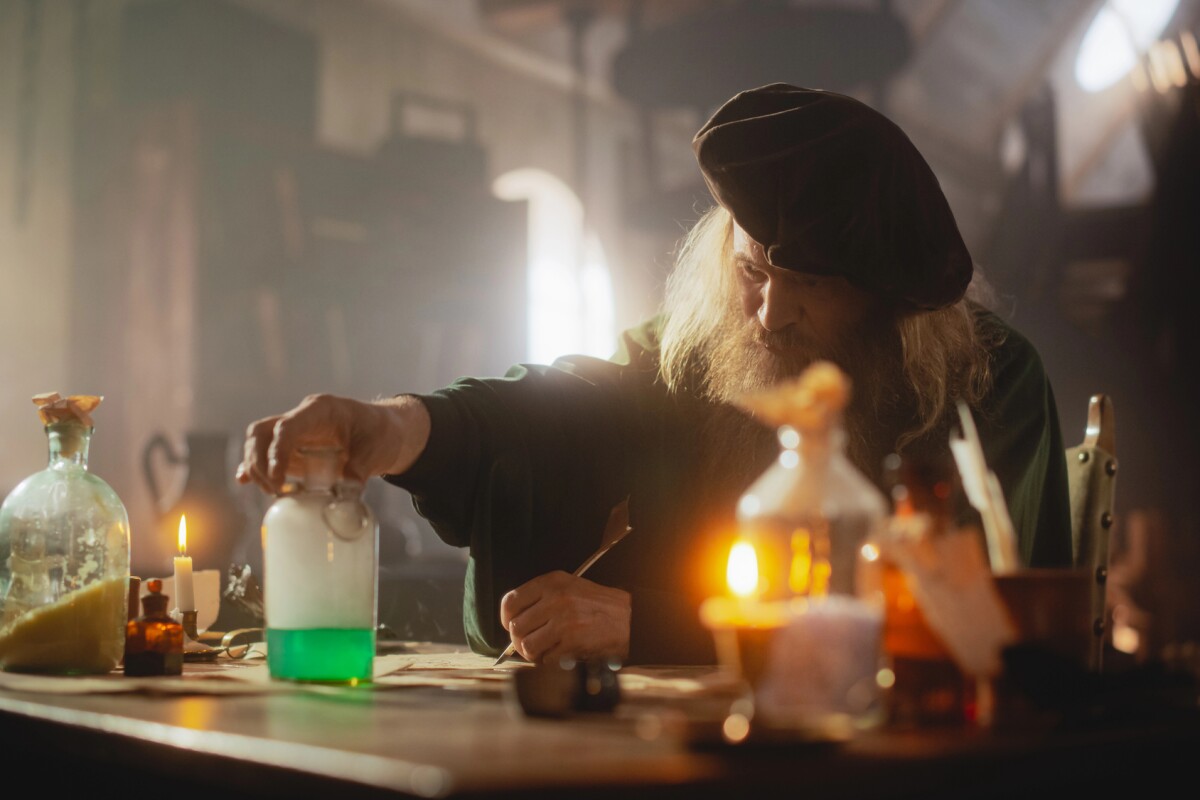
this confirms that European alchemists were following the path of Chinese alchemist from 2000 years before. actually a good starting point. what they had learned to do was to run a process that recovered or consumed what were obvious elements.
So far so good and the list here is actually as good as it gets. they could take certain elements into and out of combination. Their practice was to do this many times in an effort to change state, whatever that could mean. This can be dangerous.
the tungsten is very interesting because elemental tungsten actually looks and weighs about the same as gold. Tells you were the stories came from
Shards from famed astronomer's garden show secret alchemy lab details
July 25, 2024
Alchemists have become most famous for trying to turn lead to gold, but they also created medicinal potions, especially for the wealthy class
Tycho Brahe is best known as a Danish Renaissance astronomer. But he was also a bit of an alchemist, and a first-ever analysis on shards found at his former home from the 1500s has shed some light on just what he was up to in his basement lab.
During his life in the late 16th century, Brahe lived on the Danish island of Ven in a combined residence and observatory known as Uraniborg. The entire complex was demolished after his death in 1601, and the rubble was scattered throughout the land to be reused in other buildings. So little was left behind that could help modern day researchers reconstruct the scientist's life.
While it was known that Brahe dabbled in alchemy, and that he delivered medicines to the elite European classes during the Renaissance – allegedly including a plague remedy to his patron, Emperor Rudolph II – such practices were kept close to the vest. After all, if you had been able to turn lead into gold or create an immortality elixir, why would you share the deets? As a result, no particulars of his alchemical work survived.
The site of Brahe's former home and observatory complex, Uraninborg, which means "Castle of the Heavens"
Wikimedia Commons
In the late 1980s though, an excavation was carried out on the grounds of Uraniborg that uncovered glass and pottery shards believed to have come from Brahe's lab. Now, four of the glass shards and one pottery shard have been chemically analyzed for the first time by Kaare Lund Rasmussen from the University of Southern Denmark where he is Professor Emeritus and expert in archaeometry. In carrying out the work, Rasmussen used two popular imaging techniques: Laser Ablation Inductively Coupled Plasma with Mass Spectrometry.
Among a host of chemicals found, the study revealed the presence of nine that were specially enriched, which means Brahe would have been working to concentrate or refine them in some way: mercury, lead, copper, tin, antimony, nickel, zinc, copper and most intriguing of all, tungsten.
Transmuting Wolfram?
The tungsten raised some eyebrows because at the time of Brahe's work, the element hadn't ever been described. In fact, it wouldn't get isolated and described until Swedish Chemist Carl Wilhelm Scheele sorted it out nearly 200 years later. The most likely possibility is that the tungsten came into Brahe's lab bound to some other mineral and when the alchemist got busy refining that substance, the tungsten got enriched as well.
But in the early 1500s, a German mineralogist had written about difficulty smelting tin due to the presence of some other material. That material, which the scientist called Wolfram, meaning wolf's froth, would eventually come to be known as tungsten and Brahe might have been aware of it and interested in using it for the potions he was brewing in his lab.
The Moon, silver, and the brain
The other enriched elements on the shards track with known alchemical processes at the time. In particular, copper, antimony, gold, and mercury were part of three medicines invented by Swiss alchemist Paracelsus collectively known as Medicamenta tria, for which Brahe became famous. In fact, previous analysis carried out by Rasmussen showed that Brahe's hair and bones had sufficient levels of gold to indicate that he was likely taking his own remedies.
"It may seem strange that Tycho Brahe was involved in both astronomy and alchemy, but when one understands his worldview, it makes sense," said Poul Grinder-Hansen. Hansen is the curator of Denmark's National Museum and he worked with Rasmussen to place the chemical analysis into a historical context.
"He believed that there were obvious connections between the heavenly bodies, earthly substances, and the body's organs," he continued. "Thus, the Sun, gold, and the heart were connected, and the same applied to the Moon, silver, and the brain; Jupiter, tin, and the liver; Venus, copper, and the kidneys; Saturn, lead, and the spleen; Mars, iron, and the gallbladder; and Mercury, mercury, and the lungs. Minerals and gemstones could also be linked to this system, so emeralds, for example, belonged to Mercury."
Hansen and Rasmussen's work has been published this week in the journal Heritage Science.
You can find out more about the wild and fascinating life of Brahe and his contribution to science in the following short video from SciShow Space.
Great Minds: Tycho Brahe, the Astronomer With a Pet Elk
Source: University of Southern Denmark
No comments:
Post a Comment